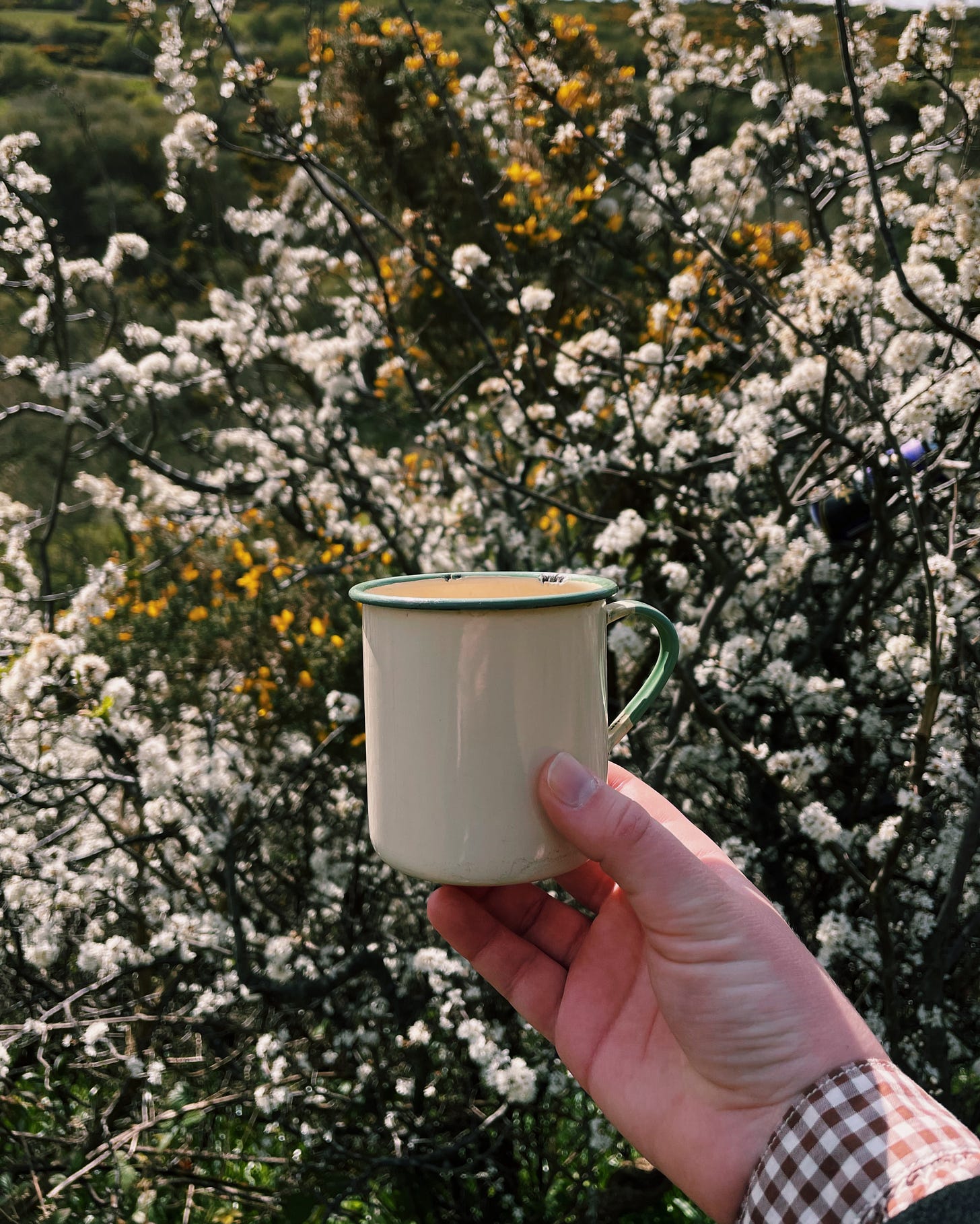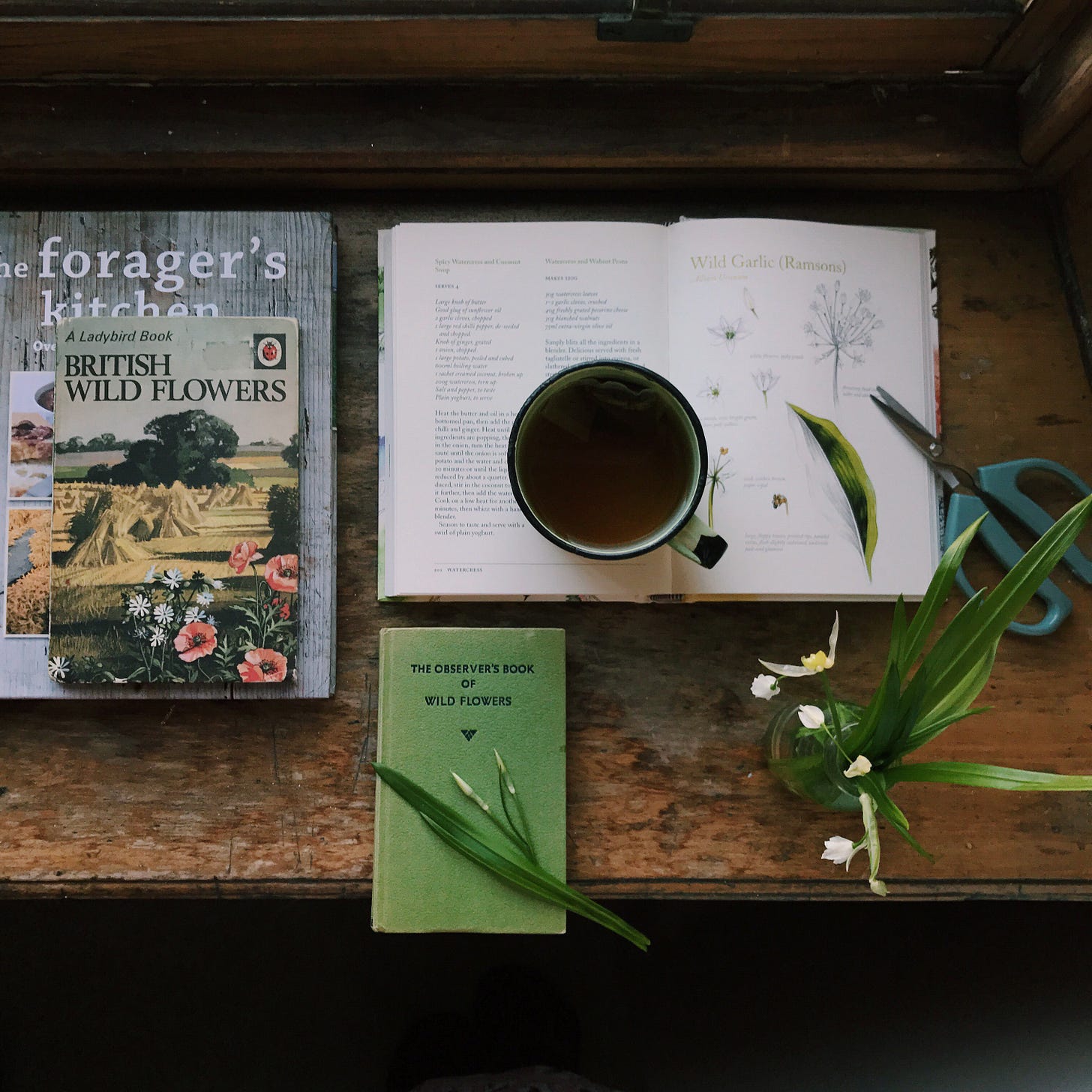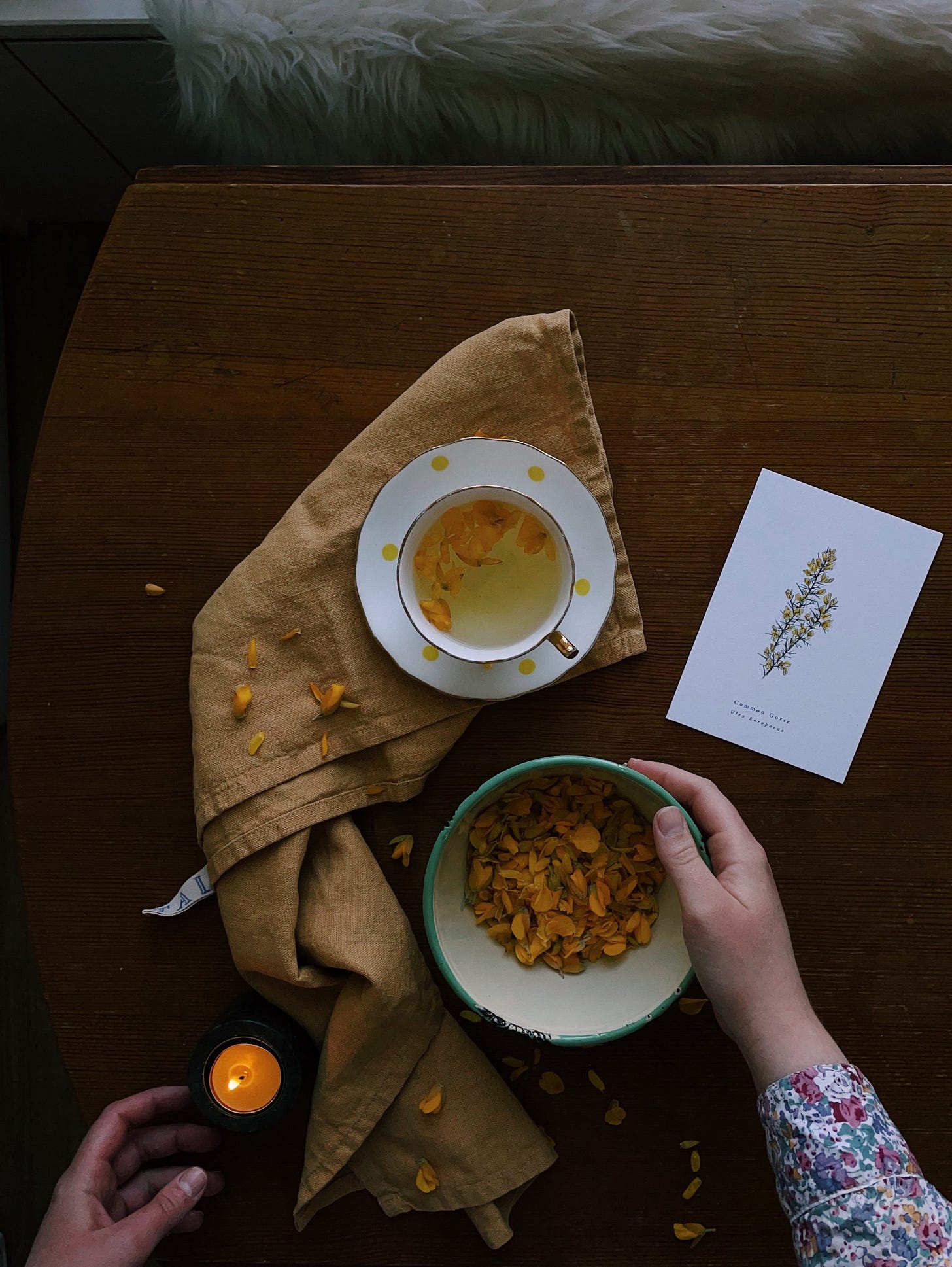This week I have been craving nature. It always happens when the world feels sped-up, or I’m particularly stressed out: a primal instinct towards silence and slowness. I spoke on my Instagram about feeling burnt out this week after a hectic term and a particularly anxious yet exciting few weeks personally (more soon) and it seemed to resonate with so many of you. I don’t have the answers, but I am particularly passionate about slow living because my day job is definitely its antithesis; over the years, I’ve learnt to seek balance by nurturing my mind through nature. Writing this newsletter has helped remind me of this, and I do hope it helps you too.
This week I’ve felt the call of the woods particularly keenly. It’s these liminal times of the year where the woodland is so spectacular; when the leaves are on the cusp of turning around Mabon, and when Ostara marks nature bursting into life once again. There’s joy to be found at all times of year, but the time leading up to, and after, Ostara is one of the most spectacular in ancient woodlands and local forests. As the trees are generally still bare, this means there’s plenty of light available to the forest floor. You can track the small shifts in the season by what’s blooming beneath your feet, starting with delicate snowdrops, through wild primroses, daffodils, ramsons and then bluebells. There’s yellow gorse and white blackthorn, fluffy goat willow and gently unfurling foliage. For me, the woods offer hope and light as Spring stirs.
I always want to hold onto the feeling of calm that observing Spring stirring in the woods gives, to take a little something of that forest magic with me. So I thought I’d share two recipes tonight to do just that: a wee, tasty reminder of small but exciting foraging finds from the woods and hills in Spring - all the more precious after Winter’s bareness. When foraging, remember to only take sparingly from each area, and to ask the land owner’s permission.
Wild Garlic and Pecorino Pesto:
Wild garlic is easy to identify by its scent: if you handle the leaves they should smell strongly of garlic (but always check a guide book if you’re not sure) and as the season goes on you can recognise them from their white, starry blooms. Wild garlic is ubiquitous at this time of year, and has a more rounded, often gentler taste than its cultivated cousin, I much prefer it. You might also find wild leeks (pictured above, the few-flowered leek I believe). A Spring staple in our house is wild garlic pesto; to make it, you will need:
200g wild garlic
Olive oil and juice of half a lemon
75g toasted pecan nuts
50g (veggie) pecorino cheese
Blanche the wild garlic in boiling water for one minute, which takes away the raw taste, drain and then blitz with a blender. Add a good glug of olive oil, the toasted pecan nuts and grated (veggie) pecorino and the juice of half a lemon and blitz again. Delicious with fresh pasta or slathered on sourdough toast.
Spring Blossom Syrup:
You can adapt this recipe for any edible Spring flowers - I’m looking forward to making it with cherry blossom and lilac soon, and in the meantime I used the pungent petals of gorse. The bright yellow flowers have a tropical, coconut scent and flavour and infuse beautifully in this syrup. To make it, you will need:
100g caster sugar
200g water
20g gorse petals
zest of half a lemon.
Dissolve the caster sugar in the water then boil with the lemon zest until syrupy – around ten minutes. Meanwhile, prep the gorse: remove any beasties! Pour the syrup over the gorse petals, then cover and leave overnight. The next day, warm your syrup over a gentle heat to loosen it, and strain into a sterilised bottle. Dilute with water and enjoy!
I hope these words and recipes bring you some calm and slowness this weekend.







Oooh I love the sound of a lilac syrup and now I’m waiting for lilacs to come with anticipation! What would you do with the syrup? I guess a drizzle cake would be a good idea! What do you usually do? X